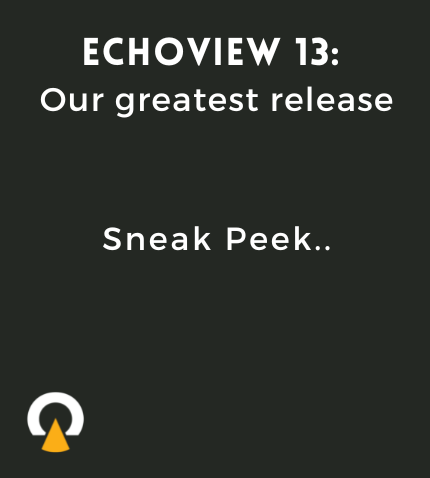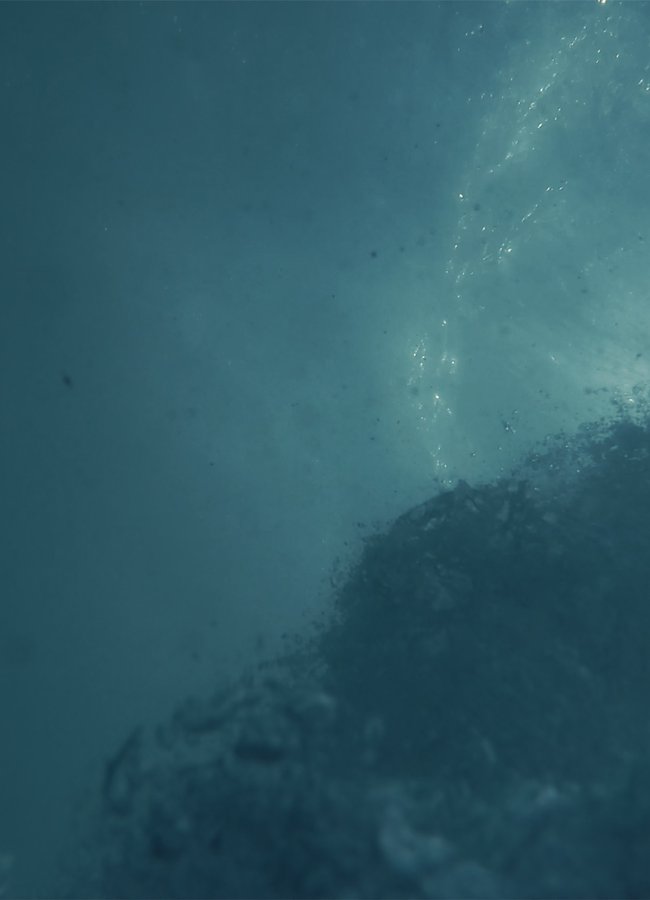As we’ve previously hinted, Echoview 13 will be our biggest release ever! It’ll include a variety of new virtual variables for use across many applications, including noise estimation, wideband noise removal, multibeam sample manipulation, new virtual line and surface operators, and more.
Noise estimation and removal – including wideband
We’re adding a new operator called Transient Noise Ping Removal, which is based on the existing Attenuated Signal Removal operator but applies an inverted version of the algorithm that can be used to identify and mitigate pings affected by transient noise. Alongside this, our existing Transient Noise Removal operator is being renamed to Transient Noise Sample Removal, to help distinguish the algorithmic differences between the two operators that tackle a similar data problem.
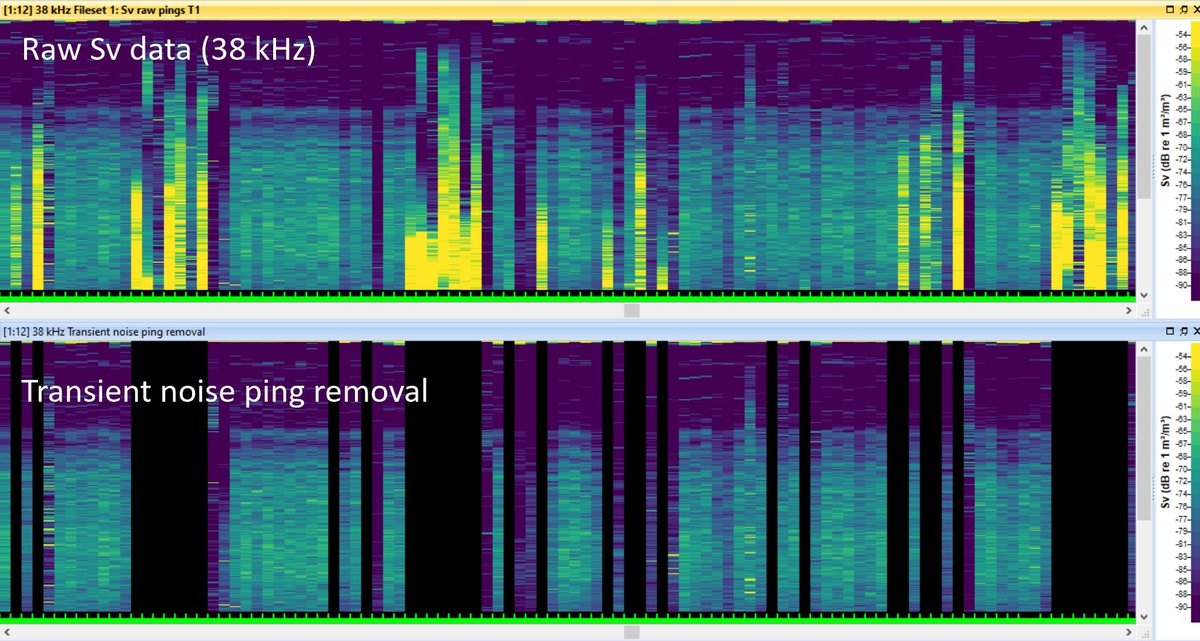
Echoview 13 will also include new Background Noise Estimation and Signal to Background Noise Ratio operators, shown in the image below. These operators are helpful for understanding the effects of background noise on your acoustic data, and are based on the concepts and intermediate steps described in De Robertis and Higginbottom (2007).
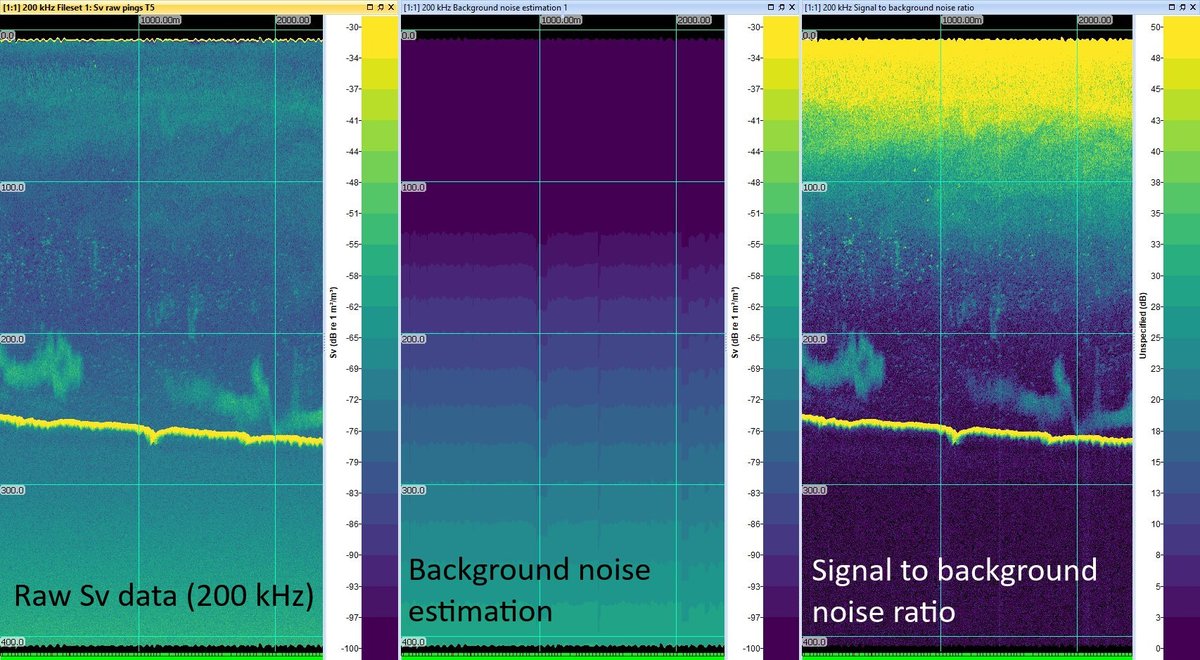
The three new operators described above will all accept both narrowband and wideband data as input variables – and so will our pre-existing operators for Impulse Noise Removal, Background Noise Removal, Transient Noise Sample Removal, and Attenuated Signal Removal. Support for wideband data as input will make Echoview 13 the best option for processing your Simrad EK80 wideband survey data!
Virtual lines
Echoview 13 will include a new virtual line operator, Near-Field Depth Estimation, that creates a virtual line corresponding to the estimated on-axis range of the near field (Fresnel zone), e.g. as described on Acoustics Unpacked. The operator will include a setting that enables you to customize the multiplication factor for the near field so that you can easily delineate and exclude your preferred range from your watercolumn analyses.
Multibeam operators
We’re adding an XxYxZ Statistic operator that enables statistical manipulation of multibeam sample data in the range/beam/ping dimensions, with mean, minimum, maximum, median, percentile, standard deviation, variance, mean absolute deviation, coefficient of variation, and kurtosis calculations built in.
We’re also including a new virtual surface operator, Linear Offset. This allows you to create a virtual surface that’s offset from an existing surface, which is particularly useful when a bottom surface has been detected in multibeam data, and an offset needs to be applied to be able to exclude the near-bottom signal from the watercolumn ahead of target and school detection or other analysis.

Operator performance
Echoview 13 will include multithreading support for all virtual variables that take acoustic data as input! You’ll see a boost in performance and usability for the final 17 operators that were not yet multithreaded – this will be especially beneficial for those using target detection in multibeam data.
To wrap up this sneak peek, we’re also including a variety of new capabilities in existing operators:
- The Vessel Speed at Pings operator will accept wideband variables as input
- The Region Bitmap operator will allow you to select multiple region types and classes:
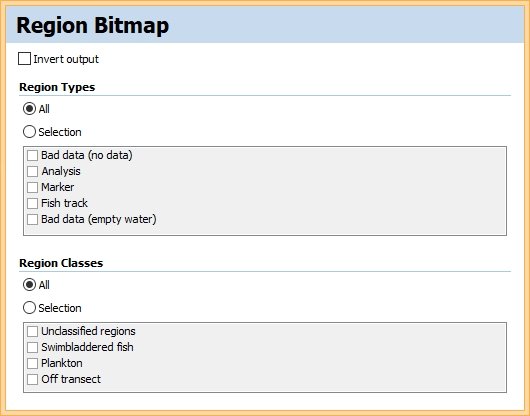
- The Mask operator will include an option to set masked samples to a custom value:

Echoview 13 will be available in the second half of 2022.
Did you spot our previous sneak peek?
For the latest news and updates, please join our mailing list.
